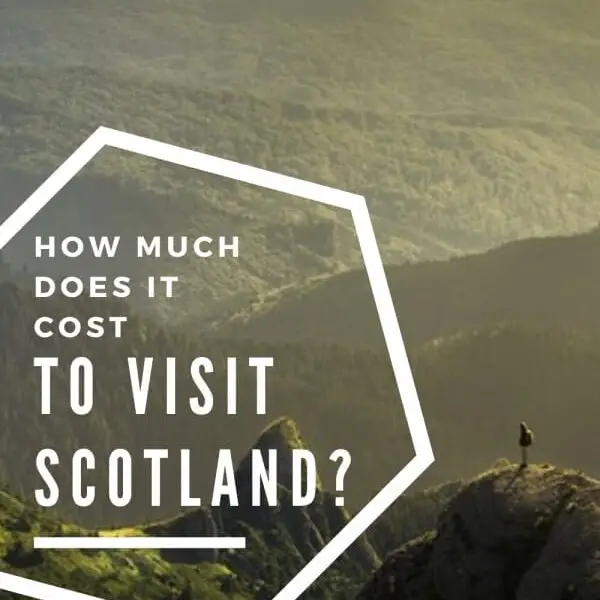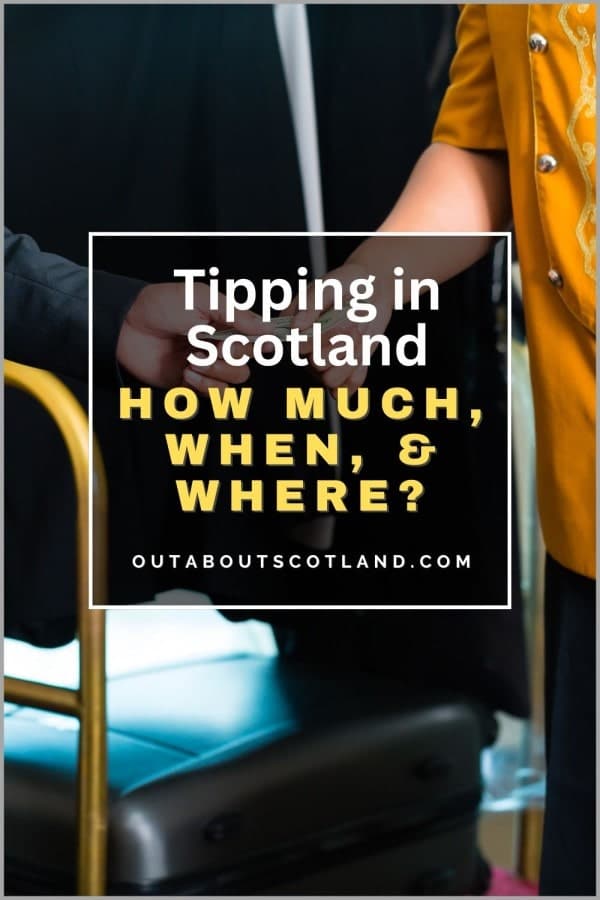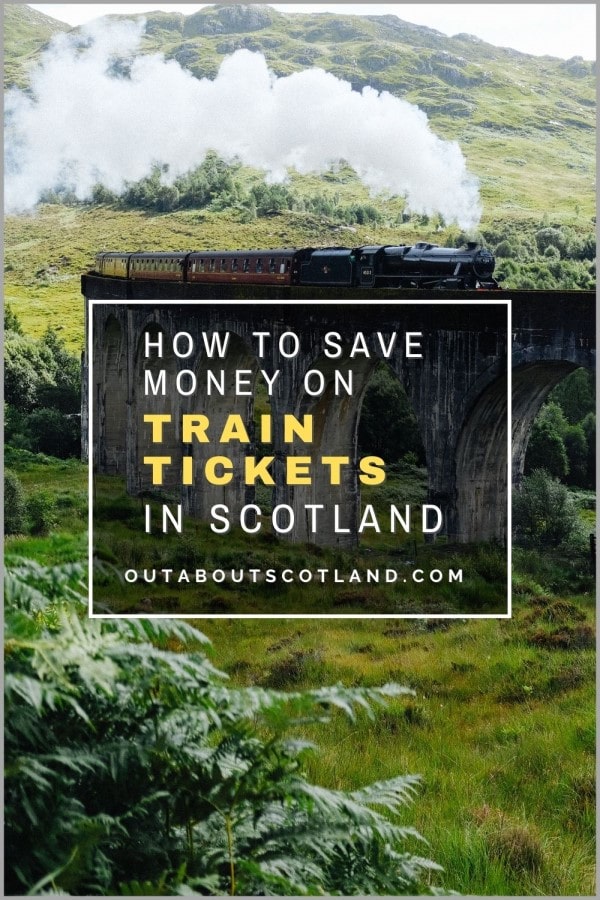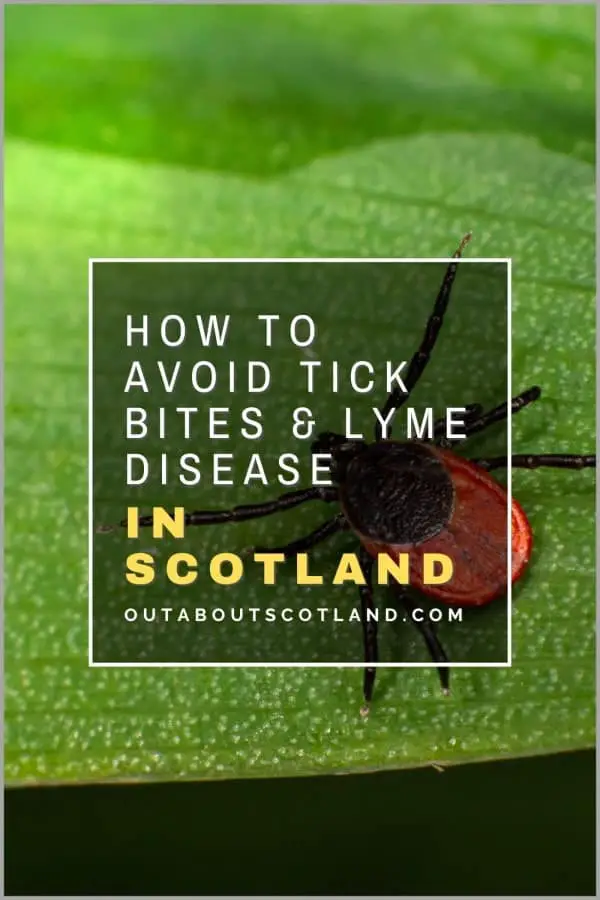‘How much does it cost to go to Scotland?’. That’s a good question for any potential visitor to this country, especially in these times of rising costs and declining incomes. In this article, you’ll discover everything you need to know about the cost of a visit to Scotland, from flights to hotels and food to tourist attractions, along with a few handy tips that will hopefully save you money when you get here.
The Cost of Flying to Scotland

Thanks to the falling pound it’s possible to get a flight to the UK today that would have been significantly more expensive a couple of years ago, especially if you choose to book off-season from October to May. These months might be chillier than the summer but you can get a real bargain if you do a little internet research and you’ll frequently find winter airfares coming in at half the price of the same journey in the summer.
You’ll often find cheaper flights to Glasgow airport than Edinburgh (which I believe is due to the fact Edinburgh is more of a tourist city than its west-coast cousin), and many international visitors do not realize the two cities are only an hour apart by rail or road.
You could save even more money by flying into London (London Heathrow is an international airport hub), but the problem is that not only is it more of a trek (expect a 4-5 hour train ride between London and Edinburgh), but the cost of the journey between the cities will seriously eat into your budget.
To give you an idea of Britain’s ferociously expensive trains, a one-way ticket for one adult from London Kings Cross to Edinburgh Waverley is around £70 as of January 2024, which goes up to £110 if you want a bit of comfort in first class. Book the same ticket for August August 1st, and the price rockets to £85 per adult for standard class and (gulp) £220 for first class.
These are the reasons why everyone in Britain complains about the rail network. Plus, they’re usually late. Still, at least the view out the window is nice. But getting back to flights, take a look at the examples below for average return airfare prices for one adult to Scotland in winter (1st December). Data is from Skyscanner January 2024.
| Departure | Arrival | Cost |
| Amsterdam | Edinburgh | £108 |
| Amsterdam | Glasgow | £108 |
| Beijing | Edinburgh | £601 |
| Beijing | Glasgow | £630 |
| Tokyo | Edinburgh | £768 |
| Tokyo | Glasgow | £749 |
| New York | Edinburgh | £589 |
| New York | Glasgow | £474 |
There isn’t much of a price difference between Scotland’s two biggest airports, Edinburgh and Glasgow, except for the flight from New York, which has a £100+ difference. I think the moral of the story here is to check two or three different airports before you book your flights – that £100+ would pay for a day of accommodation, food, and attraction tickets for most small families.
Now let’s have a look at the same journeys in the summer (1st August). Data is from Skyscanner January 2024.
| Departure | Arrival | Cost |
| Amsterdam | Edinburgh | £159 |
| Amsterdam | Glasgow | £124 |
| Beijing | Edinburgh | £1123 |
| Beijing | Glasgow | £1096 |
| Tokyo | Edinburgh | £1434 |
| Tokyo | Glasgow | £1398 |
| New York | Edinburgh | £764 |
| New York | Glasgow | £752 |
This time there isn’t much of a difference between the airports but did you notice the price increase, especially on long-haul flights? The price of flights from China and Japan has nearly doubled which means summer visitors from those destinations will be looking at paying more for flights for one person than most Brits spend on an entire family holiday. Are you really sure a summer visit to Scotland will be twice as good as a winter one?
With this thought in mind, I’ve written a complete guide about why visiting Scotland in January might be the best option for international travellers. Take a look at it here and see if it makes you change your mind. I’ve also created a guide about Scotland’s airports that will help you plan your journey.
Accommodation Costs in Scotland
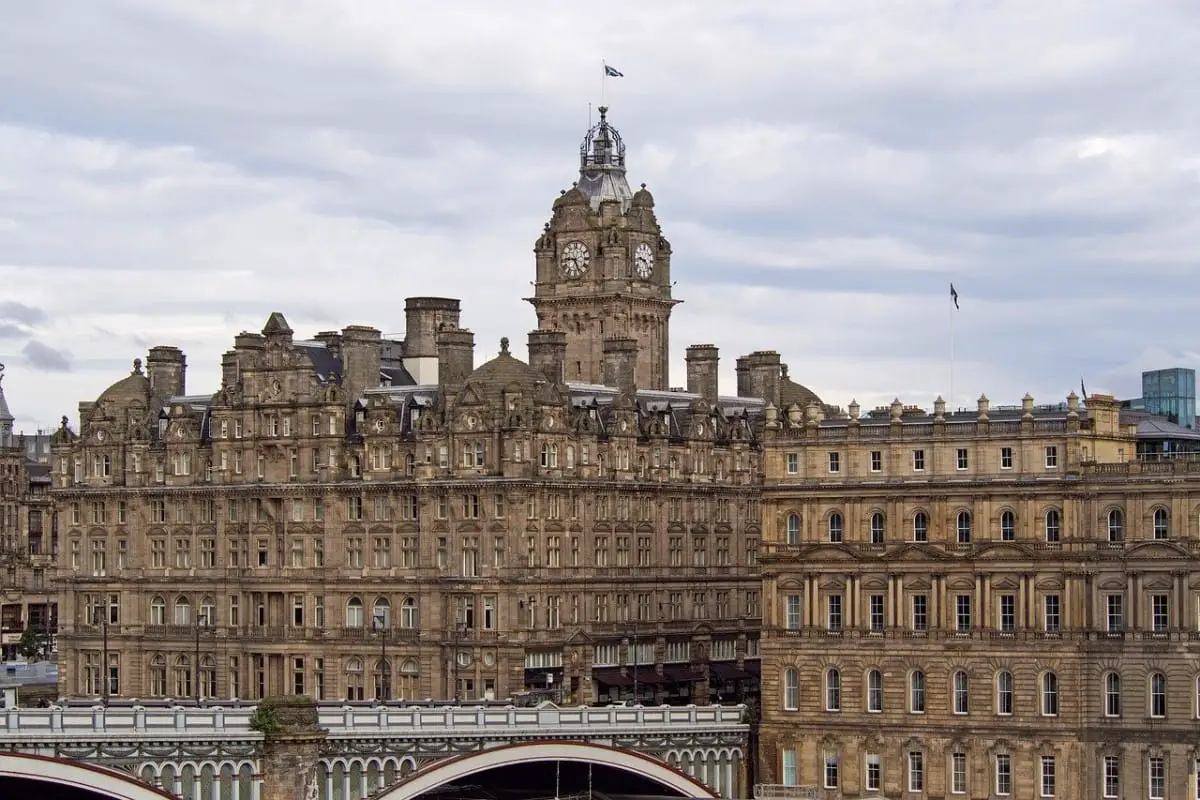
So now you’ve arrived in Scotland you’ll want to rest in your hotel – and this is where you’ll face the biggest bills. Ok, that’s not necessarily true if you’re going to head straight to the Highlands and spend a week or two wild camping because the only expense you’ll have is your tent (and anti-midge spray), but for the majority of people visiting Scotland, an extended stay means hotels and B&Bs.
If you do a quick internet search you’ll soon find prices vary wildly at different times of the year and especially so in big cities like Edinburgh which sees hotel room costs double in summer. This is made even worse when there’s a big event going on like the Edinburgh Fringe arts festival and I’ve seen some hotels triple the cost of a room in the city centre during August.
As a resident of Scotland, I have to say this is something that really winds me up, but I guess it comes with the territory of living in a country that’s a tourist hotspot. My suggestion to you if you want to stay in Edinburgh in August is to book a hotel near one of the train lines which runs into the city instead of trying to find a room in the city centre.
Scotland’s trains are pretty good for short distances, and not only are they frequent, but the prices are quite reasonable. I’ll give you an idea of Edinburgh hotel prices in August for a range of quality levels, along with a few out-of-town options. This information is from Travel Supermarket, January 2024.
| Edinburgh city centre hotel (2 adults sharing per night) mid-August | Rating | Cost |
| The Scotsman Hotel | Luxury | £354 |
| Old Waverley Hotel | Mid Range | £256 |
| easyHotel Edinburgh | Budget | £119 |
| Out-of-town hotel (2 adults sharing per night) mid-August | Rating | Cost |
| Best Western Kings Manor | Upper Mid Range | £187 |
| Mercure Livingston Hotel | Mid Range | £131 |
| ibis Budget Hotel Edinburgh Park | Budget | £128 |
Not much of a difference at the budget end but it’s a different story for the upper and mid-range hotels. And now the same hotels in winter (January). Note that you’ll be more limited in the type of hotel when you go out of town as you’ll have to take whatever’s near the train line. You could book a taxi but frequent short taxi rides will outweigh the savings of booking an out-of-town hotel.
| Edinburgh city centre hotel (2 adults sharing per night) mid-January | Rating | Cost |
| The Scotsman Hotel | Luxury | £217 |
| Old Waverley Hotel | Mid Range | £201 |
| easyHotel Edinburgh | Budget | £47 |
| Out-of-town hotel (2 adults sharing per night) mid-January | Rating | Cost |
| Best Western Kings Manor | Upper Mid Range | £82 |
| Mercure Livingston Hotel | Mid Range | £46 |
| ibis Budget Hotel Edinburgh Park | Budget | £49 |
That’s quite a saving but note that these are the prices for rooms booked several months in advance. If you don’t book early you’ll find the prices increase drastically the nearer you get to your preferred dates.
But what about heading to the Highlands and the Isle of Skye? Well, it depends on where you want to go. I spent a lovely week in Skye last year but I made sure I did my research before booking accommodation and I was really shocked at the prices. Unfortunately, Skye has become a victim of its own success and because there are so many tourists the hotel operators charge pretty much whatever they like.
The main town of Portree has some very nice-looking hotels but their rooms go for crazy money in the summer so expect to pay up to £300 per room per night if you go for the upper range and £150 for a mid-range with breakfast. And that’s for small rooms that accommodate two people only.
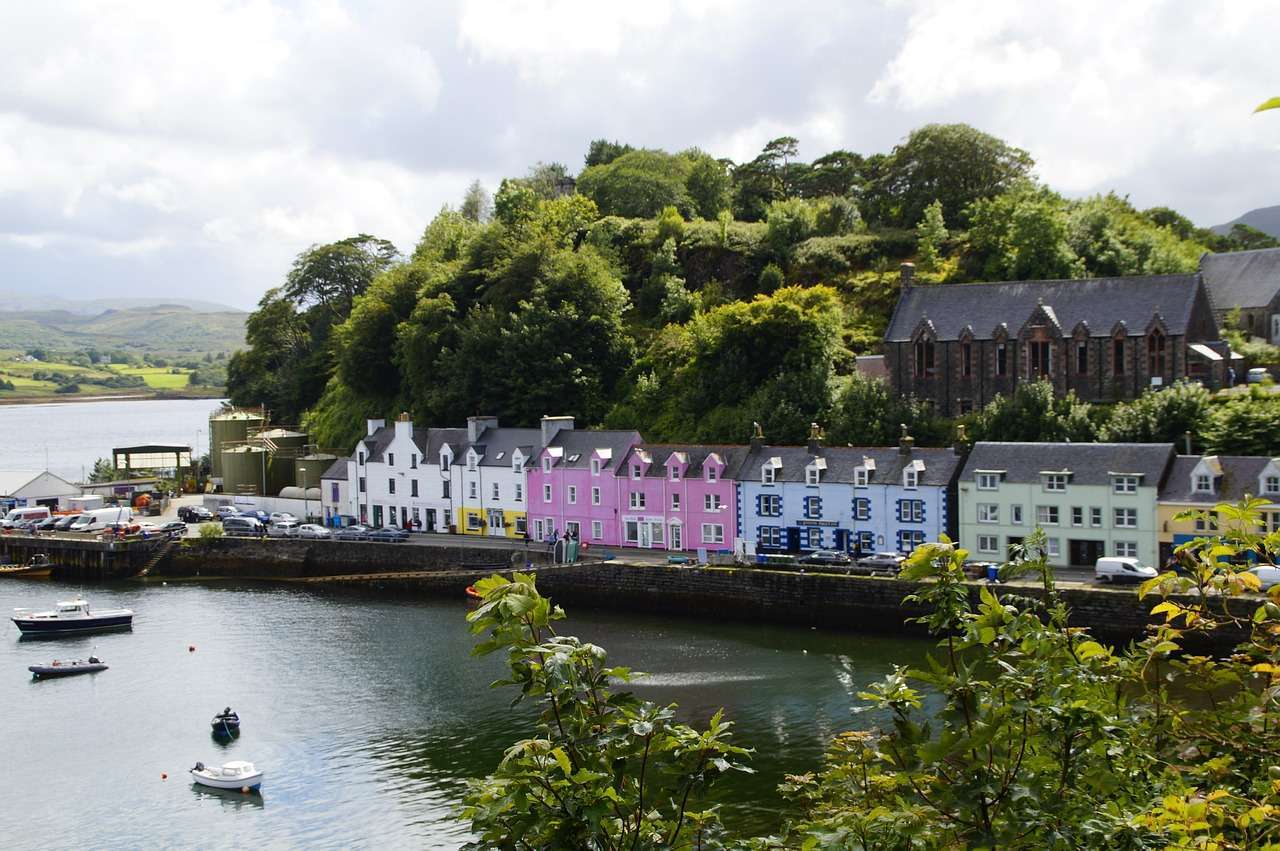
A much better idea is to book an entire house on Airbnb well in advance as you can get an absolute bargain if you search around and are prepared to stay a little outside the main tourist areas. I chose a lovely three-bedroom house overlooking Portree that had a large dining room, kitchen and garden for just £120 per night and I couldn’t have been happier with it. Not only did it have stunning views across Loch Portree but the drive from the door to the town centre was less than ten minutes. Take that, overpriced hotels!
Getting back to the Highlands, you’re going to struggle to find a hotel in most of the wee villages that haven’t already been sold out months in advance if you travel in summer, but winter is a different story and you can often get rooms on the day of arrival.
However, my recommended type of accommodation in the Highlands is the humble B&B. There are many more B&Bs in the Highlands than hotels because they’re usually converted farmhouses, and they’re almost always run by incredibly friendly people.
There’s no better way to get to know a place than by chatting to the people who live there and by booking yourself into a B&B you’re guaranteed to get all the local information about the best places to go that a stuffy hotel probably won’t tell you.
Travel Supermarket is the best resource for finding B&Bs in my opinion but if you want a more bespoke option (and a little pricier) you should take a look at the Scotlands Best B&Bs website. I’ll list a few suggestions for Highland B&Bs that are located in the best areas for exploring the surrounding landscape. These are for two-person rooms per night in mid-August – just search for the name on the Travel Supermarket website.
- The Auld Kirk – Ballater. £150
- Dunvegan B&B – Dufftown. £77
- Corrie Liath B&B – Fort Augustus. £99
- Urquhart Bay B&B – Drumnadrochit. £120
- The Birches B&B – Ullapool. £90
- Aililgean B&B – Inverness. £95
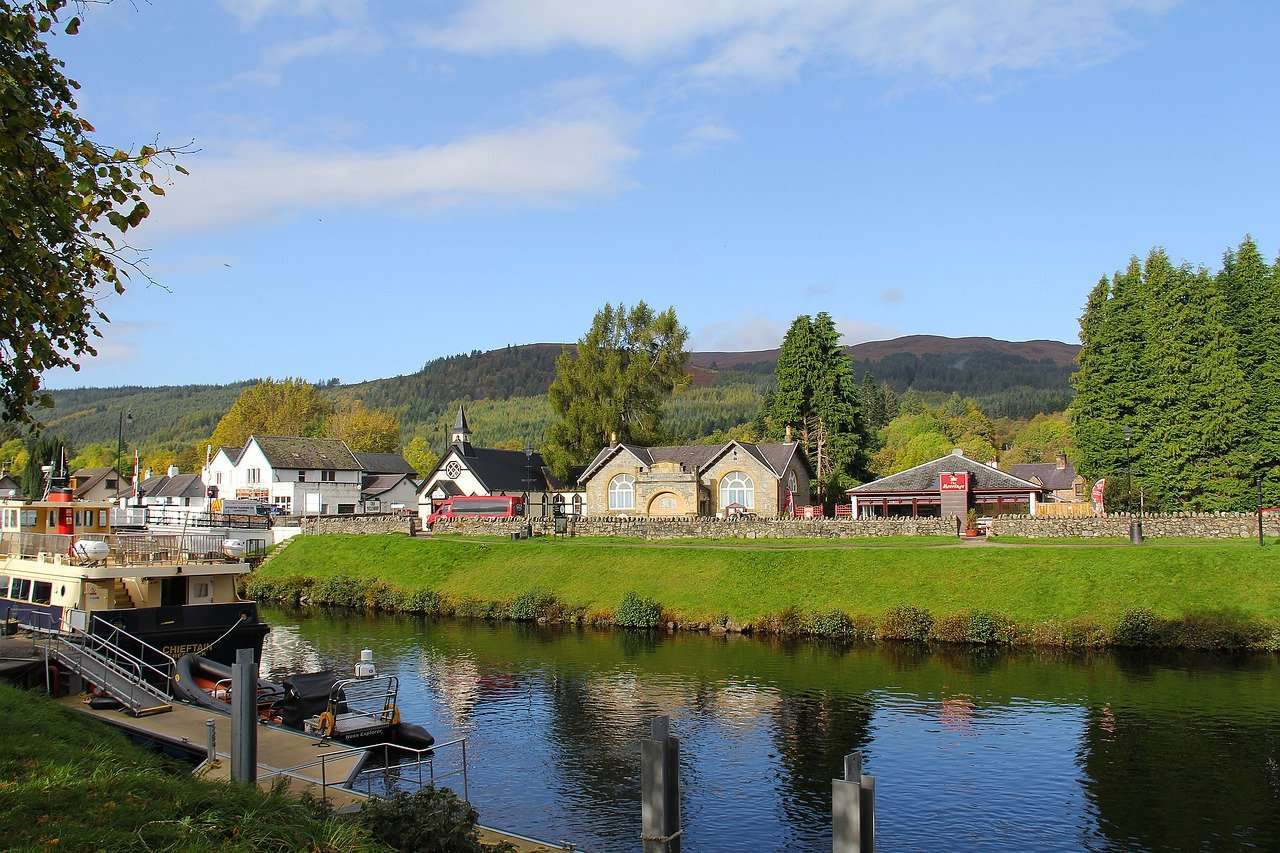
Now for a couple of Booking.com money-saving tips.
There are a couple of ways to save money on Booking.com accommodation, the first of which is to join their ‘Genius’ program. By signing up you’ll receive bonuses at different levels depending on how many reviews you leave and how many times you book, with each level giving you different rewards the next time you book online.
Expect 10% off some rooms at level one and 15% off at level two, with the added bonus that some hotels offer free breakfast for Genius level two members. Another way to save money is by booking on your phone rather than on your desktop, as you’ll sometimes get a mobile discount which can be another 10% on top of whatever you get as a Genius member.
Another surefire way to save a few quid is to save up points with selected hotels, although these schemes are usually aimed at frequent travellers like businessmen. I’ve used a few in the past but can thoroughly recommend Best Western Rewards and Marriot Rewards. Both schemes offer room upgrades, discounts and even free stays if you’ve built up enough points.
Is Travel Expensive in Scotland?
Unless you’re prepared to walk or cycle everywhere I’m afraid you’re going to rack up quite a few costs travelling around Scotland. Although the travel infrastructure is generally good it’s not particularly cheap, and visitors from overseas need to be mindful that here in the UK we pay one of the highest fuel costs in Europe in addition to the already-mentioned expensive rail fares.
Buses on the other hand are quite good value for money so if you’re looking for a cheap way to travel – albeit somewhat limited – you might consider taking a coach between cities and using local buses once you get there.
But of all the transport methods on offer I have to say hiring a car is almost always the best option as not only do you get to travel when and wherever you want, but you can pull into the roadside whenever you like (not on dual carriageways or motorways…) to admire those breathtaking views.

When hiring a car I suggest you book online before you leave home as you’ll almost always save money compared to booking on the day. If you don’t want to be stung by additional charges – expect temporary debits for insurance of up to £1,000 with budget rental companies – then stick to the big guns like Hertz, Enterprise and Sixt.
Getting back to those fuel costs, you should know that the cost of fuel has soared in the last couple of years and is currently (as of 2024 from the RAC website) around £1.50 per litre of petrol and around £1.60 per litre of diesel.
That means to fill up an average hatchback like a VW golf will cost you an average £70 to £80 which would give you around 500 miles of driving, so a two-week self-drive holiday covering about 1,500 miles would cost in the region of £210 in fuel costs, and that’s before you’ve paid the hire car rental and insurance.
Prices vary quite a bit between rental companies depending on which insurance package you go for and the size of the car you hire so take a look at the table below for a few examples of what you can expect to pay per day.
| Rental Company | Car model | Car Type | Car Hire Cost | Petrol Fuel Economy |
| Hertz | Vauxhall Corsa | Mini Hatchback | £50 | 55 mpg |
| Hertz | Vauxhall Astra | Medium Hatchback | £95 | 48 mpg |
| Hertz | Skoda Octavia | Large Hatchback | £135 | 44 mpg |
| Enterprise | Toyota Aygo | Mini Hatchback | £42 | 69 mpg |
| Enterprise | Ford Focus | Medium Hatchback | £49 | 47 mpg |
| Enterprise | Vauxhall Insignia | Large Hatchback | £75 | 45 mpg |
| Sixt | Mini | Mini Hatchback | £105 | 40 mpg |
| Sixt | Citroen C4 Cactus | Medium Hatchback | £70 | 49 mpg |
| Sixt | Peugeot 3008 | Large Hatchback | £99 | 55 mpg |
How Much Does It Cost to Travel to Scotland by Train?
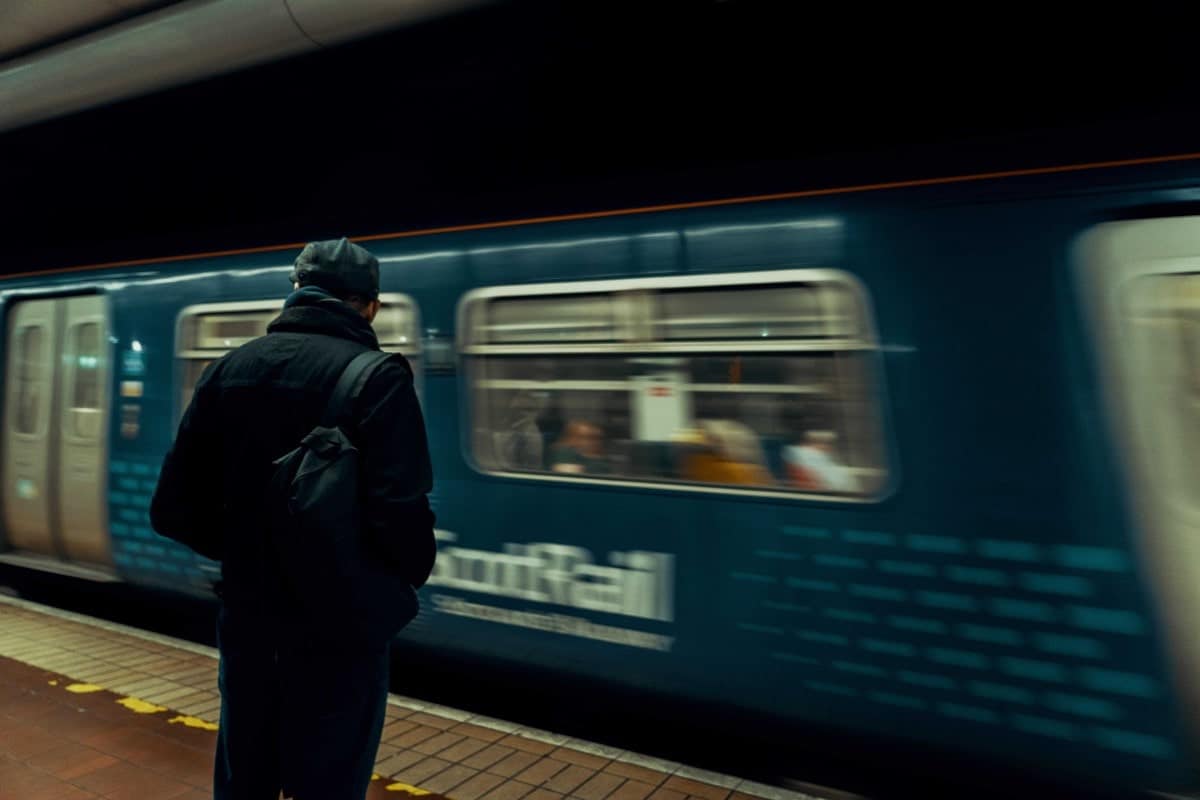
So that’s driving out of the way, but what about the train? This is the preferred travel option for most tourists as it’s a great way to see the country without getting stuck on busy roads but of course, the downside is that it can really eat into your holiday budget.
The main rail operator in Scotland is ScotRail, so before deciding that you’re going to take the train you should pop over to the Scotrail website and check out their current prices. The ScotRail website is full of useful information and it’ll help you no end to use the train in Scotland, including how and where to get tickets and where the railway lines start and end.
As far as prices are concerned I recommend you book well in advance as tickets are usually released twelve weeks before the departure date and they slowly creep up the later you leave it. I also suggest you buy ‘Anytime’ tickets as it’ll mean you don’t have to worry about getting stung for an additional charge if you end up on the train at peak times.
You’ll occasionally get a discount on first-class tickets which are worth getting if they’re not too expensive as the extra-comfy seats include complimentary drinks and snacks, but if you can’t get a discount I wouldn’t bother as you’ll often pay twice what a standard ticket costs.
An example of the drastic price difference between standard and first-class carriages is the journey from Edinburgh to Aberdeen, which costs £44 for the cheaper ticket but ramps up to £97 (as of January 2024) if you want a bigger seat and a ham sandwich.
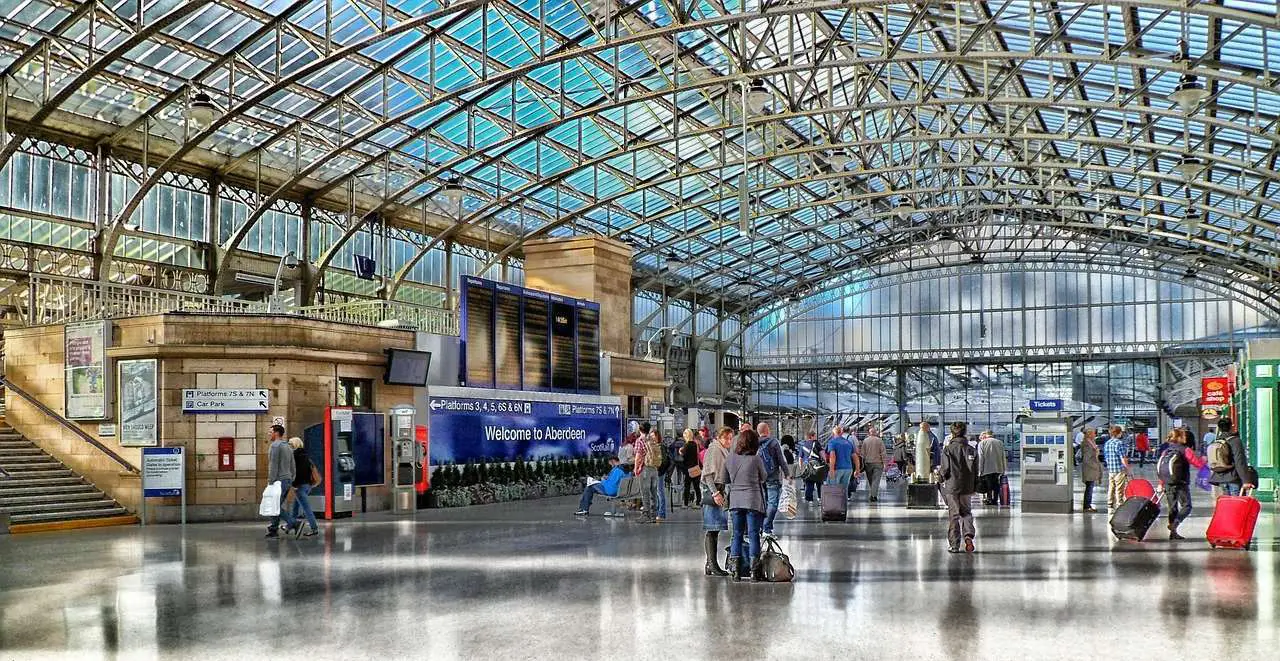
Here are some examples of standard single-journey anytime train ticket prices as of 2023:
| Departure | Destination | Price |
| Edinburgh | Glasgow | £15 |
| Edinburgh | Aberdeen | £39 |
| Glasgow | Aberdeen | £45 |
| Glasgow | Inverness | £49 |
| Inverness | Wick | £24 |
| Inverness | Kyle of Lochalsh (Skye) | £37 |
One option you have for saving money that I highly recommend is to get an all-in-one travel pass which allows unlimited train travel on certain lines over a fixed number of days. You can also get passes that include coach and ferry travel if you want to explore the islands so you might like to have a look at the ScotRail website to get an idea of what’s on offer.
The current rail travel passes are:
- Spirit of Scotland Rover: Offers unlimited rail travel throughout Scotland for either four or eight days. Four days of unlimited travel over eight consecutive days cost £149 while eight days of unlimited travel over fifteen consecutive days cost £189.
- Scottish Grand Tour: Touted as one of the great rail journeys of the world, the Scottish Grand Tour is a circular route that passes through lochs, mountains, forests and countryside. Four days of unlimited rail travel is £89.
- Highland Rover: Gives you four days of unlimited travel over eight consecutive days across the Highlands for £95. Although it’s only valid for standard class you can travel at any time and you’ll get 20% off Northlink ferry services to Orkney and Shetland.
- Central Scotland Rover: Allows holders to take unlimited journeys between Glasgow, Edinburgh, and the surrounding area for just £55. The pass lasts for three days and is valid for standard class journeys on ScotRail trains, but unfortunately you can’t use it on the new Borders railway line.
- Rail and Sail: Getting to the north and west coast islands has never been easier thanks to ScotRail’s Rail and Sail which combines rail and ferry travel in one ticket. Prices vary and are dependent on the specific journey.
I’ve written a comprehensive guide on How to Tour Scotland by Train so have a read through it to discover everything you need to know about Scotland’s railways and the best train journeys to take while you’re here.
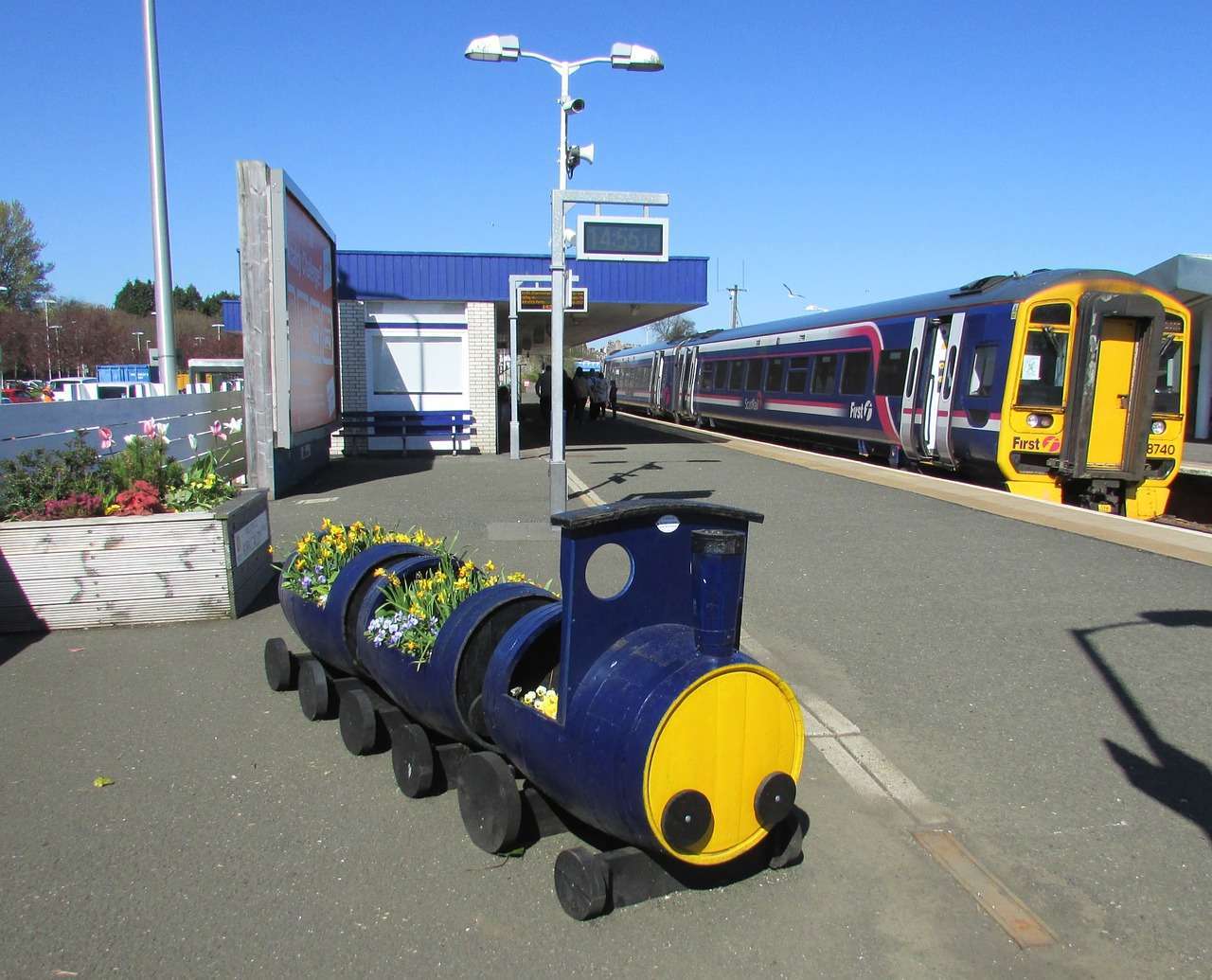
If you’d rather not listen to the clickety-clack of train tracks hour after hour you could always take the bus and Scotland has great bus services between cities and in most towns.
The two biggest inter-city bus operators are Megabus and Citylink and both offer affordable travel on frequent services that link all the major cities in the country. While the standard coaches are pretty basic and not really recommended for holiday travel, Citylink offers a ‘Gold’ service that features leather seats, onboard snacks and Wi-Fi for just a little extra money.
It’s a great service that’s cheaper than the train, takes roughly the same amount of time and has depots right in the heart of each city. The table below shows the same departure/arrival points as the train stations in the table above, but this time on Citylink buses. Note that these are for tickets booked in advance. If you purchase on the day they’ll be more expensive.
| Departure | Destination | Price |
| Edinburgh | Glasgow | £9 (Standard) |
| Edinburgh | Aberdeen | £22 (Gold) |
| Glasgow | Aberdeen | £22 (Gold) |
| Glasgow | Inverness | £22 (Gold) |
| Inverness | Wick | £21 (Standard) |
| Inverness | Kyle of Lochalsh (Skye) | £23 (Standard) |
Once you’re in the city you’ll find the main bus operator in Scotland is First Bus except for Edinburgh which has the excellent Lothian Bus network. I always give a wee shout-out to Lothian Buses as they’re such a fantastic company with impeccably clean, modern, and ultra-efficient buses, and the prices are reasonable too.
Sticking with Edinburgh you’ll get a single adult ticket from the airport to the city centre for £4.50 and all-day tickets which allow unlimited travel in Edinburgh for just £4.50 per adult or £9.50 for a family.
First Bus covers much of Scotland and taking Glasgow as an example you can get an all-day adult ticket for the Greater Glasgow area for £4.70, and an all-week ticket allowing unlimited travel for £17.50. The airport bus to the city centre is £9.
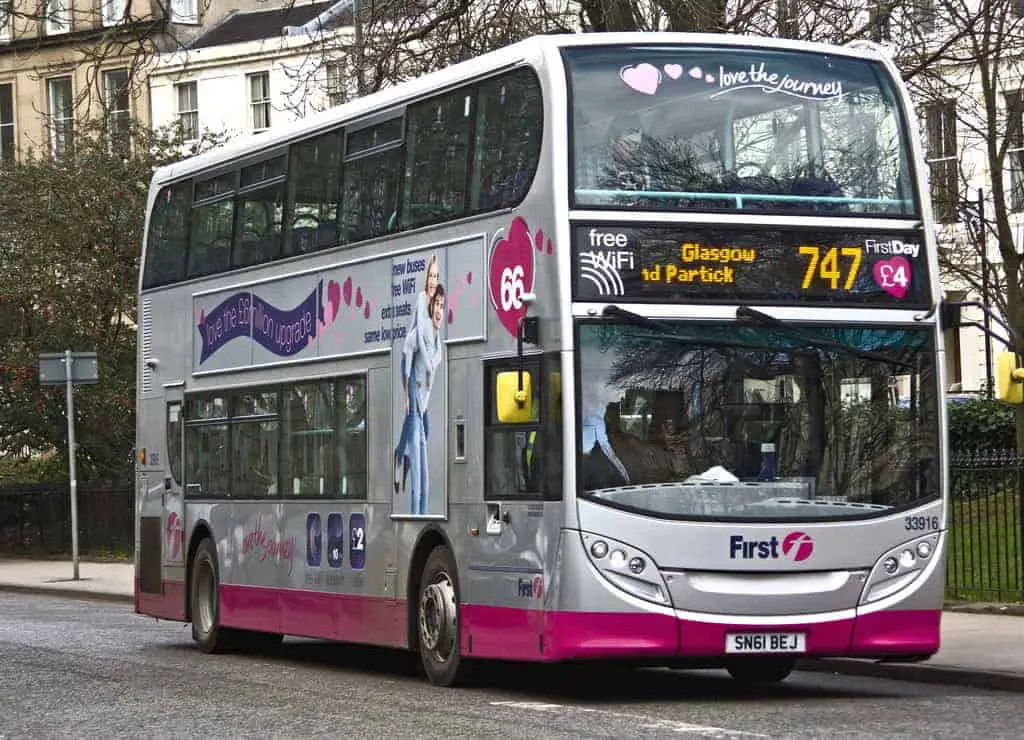
Once you get out into the Highlands you’ll find a lot of competing bus companies so it wouldn’t be practical to list them all here, but to be honest I really wouldn’t advise using the bus in the Highlands as they’re so infrequent. My advice in this instance would be to use a hire car but if you’d like more information about using Scotland’s public transport network take a look at my guide ‘How To Travel Around Scotland Without a Car‘
The last option for transport in Scotland is taking a taxi which is a good idea if you want to get straight to your hotel after arriving at the airport but they’re very expensive if you use them day-to-day. In big cities, we have black cabs (like you see in London) which are the ‘official’ council-approved taxi services along with minicabs as well as a few Ubers in some large cities.
Personally, I’d stick with the black cabs as the prices are transparent, the drivers are vetted, and you can be certain you won’t get ripped off when the cabbie realizes you’re a tourist who’s unfamiliar with the area. They’re expensive though. Expect a 20-mile taxi ride with a black cab to cost £40 – £50.
As an Edinburgh resident, I recommend you use the company Central Taxis which has never let me down whenever I’ve booked with them.
Food Prices in Scotland
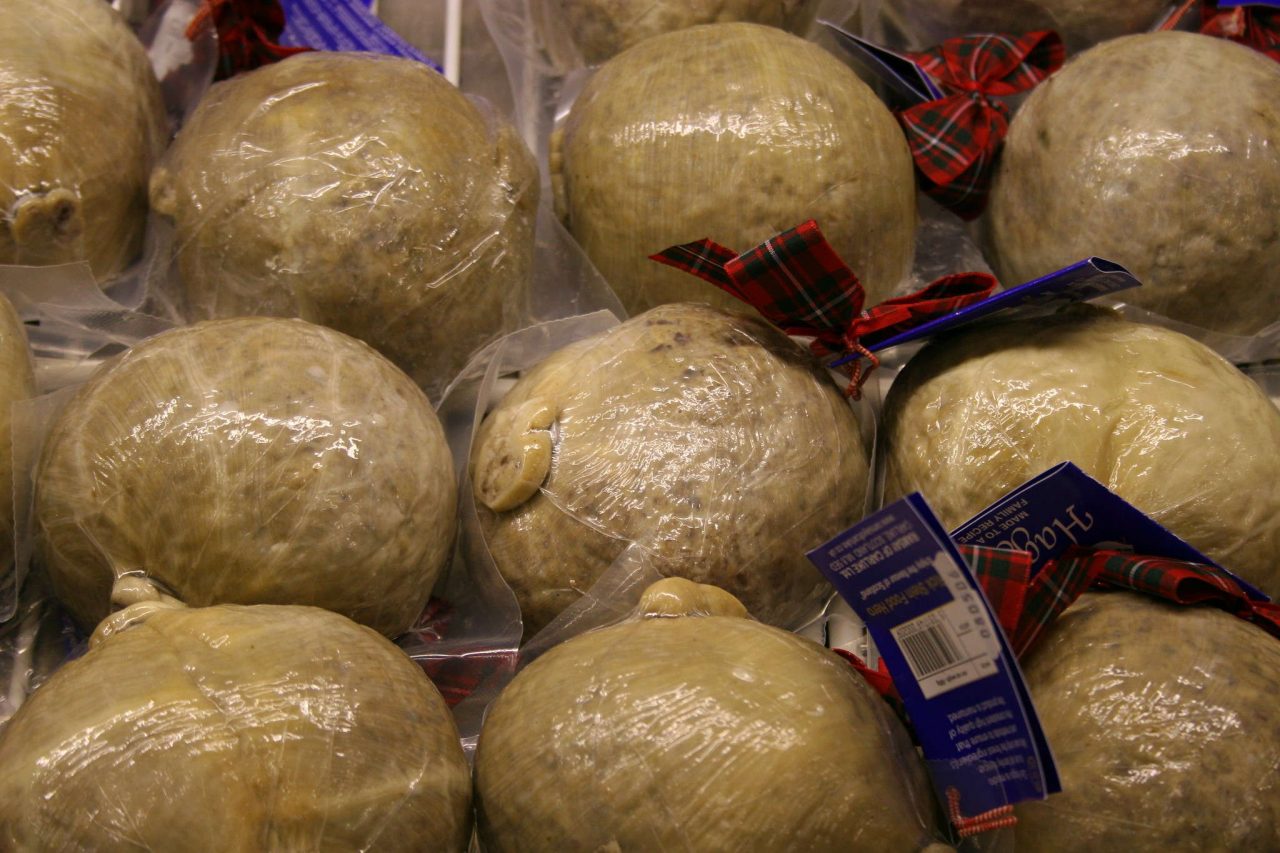
The next two sections covering food and tourist attractions are going to be a lot shorter than the previous ones because the prices vary so much it’s impossible to guess how much a visitor will spend during a holiday, although I can at least give a few examples of the most popular options.
Obviously what you spend on food will depend on the type of meals you have so if you’re happy to munch on a burger for lunch you’ll get change from a fiver. If you’d rather sit down to a 3-course meal in a nice restaurant with a glass of wine prepare to dig £30 to £40 out of your wallet. That’s per person by the way.
One option to save a bit of cash on your Scottish holiday is to make your own meals, but of course, that’s only possible if you’re staying in a rented holiday home. If that’s the case, you’ll find British supermarkets are roughly equivalent, except for Lidl and Aldi, which have significant discounts on most products.
Supermarket chains in Scotland:
- Lidl
- Aldi
- Tesco
- Sainsbury’s
- Asda
- Scotmid
- Morrisons
To give you an idea of what we pay for food in UK supermarkets have a look at the everyday essentials in this table:
| Description | Price |
| Loaf of bread | £1.20 – £1.80 |
| 4 pints milk | £1 – £1.50 |
| 200g ham | £1.50 – £2 |
| 200g instant coffee | £3 – £4 |
| 4 cans baked beans | £2.50 – £3 |
So that’s a basic breakfast and sandwiches for about a tenner but that’s not exactly what you want to eat every day on holiday is it? You’re bound to include a few meals and snacks while you’re out exploring so I’ll list a selection of eating-out options in yet another table:
| Breakfast | Price |
| Scottish fried breakfast – hotel (upper-range option) | £12 – £15 |
| Scottish fried breakfast – pub chain e.g. Wetherspoons (mid-range option) | £8 |
| Scottish fried breakfast – street van (cheap option) | £5 |
| Snacks | |
| Ham sandwich – hotel (upper-range option) | £10 |
| Ham sandwich – pub chain e.g. Wetherspoons (mid-range option) | £5 |
| Ham sandwich – street van (cheap option) | £2 |
| Lunch/evening meal | |
| Fish & chips – hotel (upper-range option) | £15 – 20 |
| Fish & chips – pub chain e.g. Wetherspoons (mid-range option) | £7 – £12 |
| Fish & chips – street van (cheap option) | £5 – £6 |
Bizarrely, what most Scots would consider basic meals are the meals that cost the most in restaurants, so if you’re looking for a bowl of Cullen Skink or a plate of haggis, neeps, and tatties, prepare to dig deep in your pockets. If you want a more in-depth look at British fast-food prices, take a look at FastFoodPrice.co.uk which is a work in progress but has lots of menu items from the most popular fast-food outlets.
The Cost of Attractions in Scotland
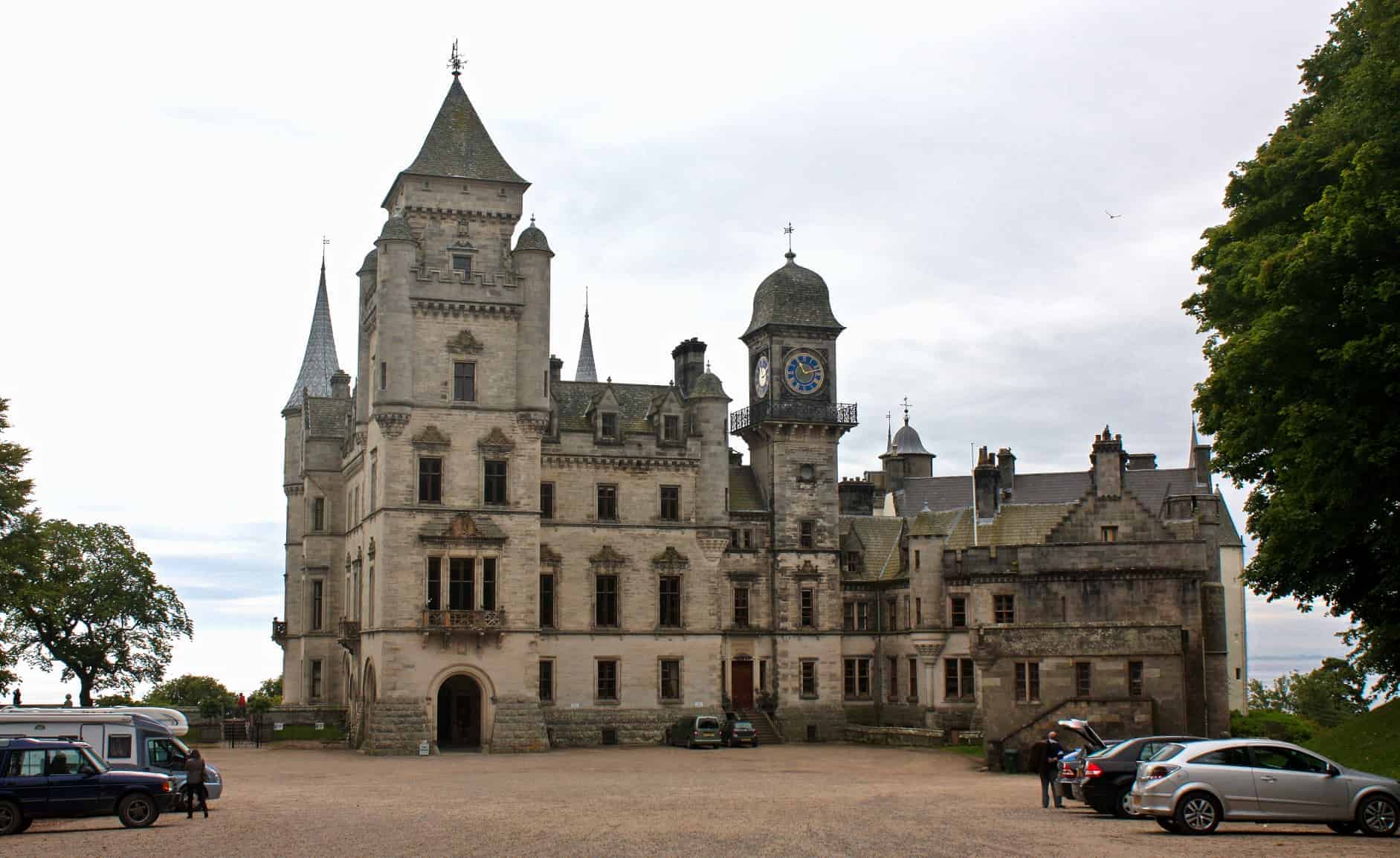
I can start this section by asking ‘how long is a piece of string?’. It’s impossible to give a complete of list Scottish attractions as they vary wildly and the prices constantly change. I have a couple of suggestions for you to save a bit of money while you’re in Scotland though.
First, if you want to see the best of the great outdoors, nature reserves and a few historic houses consider getting a National Trust for Scotland membership. The trust maintains a large part of Scotland’s wild places as well as some of the country’s most significant historic attractions, and membership includes unlimited visits to all their sites so you could save big on a touring holiday.
You’ll also be supporting the maintenance and care of Scotland’s incredibly fragile wildlife and landscapes which I reckon is worth the price alone.
Join the National Trust for Scotland.
Second, get a Historic Environment Scotland membership, as they look after most of the ‘big’ attractions in Scotland, and they have a wide range of memberships to suit all ages and budgets.
If you go to Viator.com and search ‘Historic Scotland Explorer Pass’, you’ll be able to buy a special pass that allows unlimited entry to most of Scotland’s historic attractions for around £35. That works out incredibly cheap when you consider that a single visit to Edinburgh Castle is £19.50.
Choose between a 5-day or 14-day Historic Scotland Explorer Pass and enjoy free entry to 78 of Scotland’s top heritage attractions, plus you can avoid the queues at the ticket offices at Edinburgh Castle and Stirling Castle with your ticket.
Buy low-price tickets on Viator.
I’d say those two memberships alone will cover you for visiting tourist attractions for your holiday in Scotland as 90% of the best remaining ones are completely free to visit – which includes all the national galleries in Edinburgh and Glasgow as well as the majority of Scotland’s museums.
The other 10% of attractions vary in price massively, but you’ll find most city centre-paid attractions are quite pricey, so expect to pay around £15 for an adult ticket and around £8 for under-18 tickets, but at least entry for under-5s is usually free.
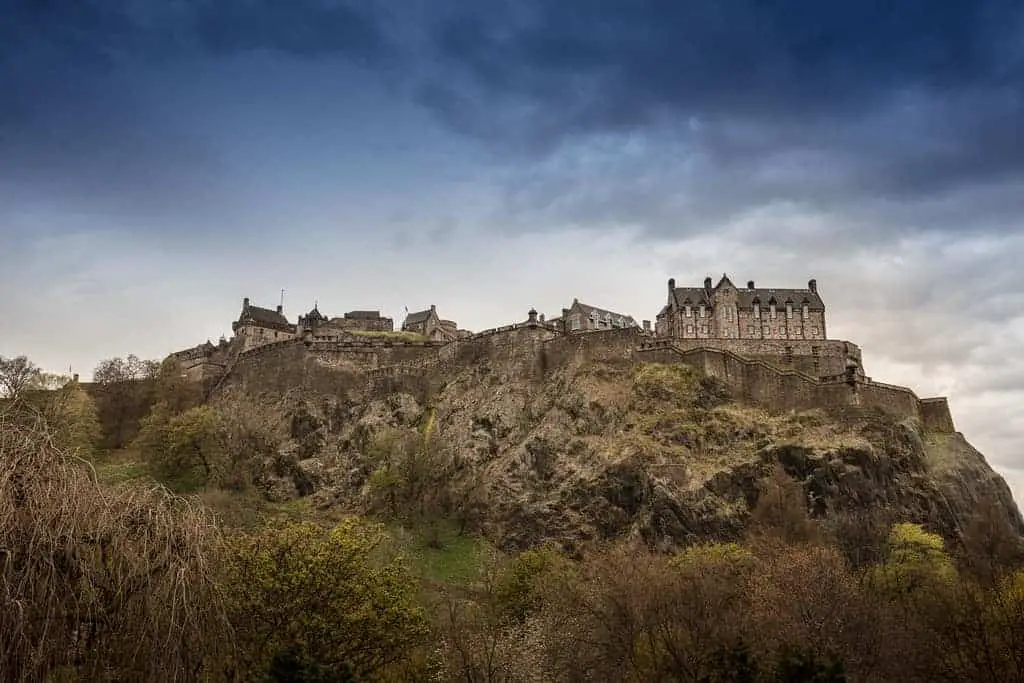
Conclusion: The Cost to Go to Scotland for a Week
Take a look at the tables below for a realistic daily budget for Scotland. Please note that these tables exclude the cost of travel to and from the country, as it will depend on where you’re coming from. Note that the accommodation price is per room, and all other prices are per person.
Luxury Holiday
| Description | Per day | Total |
| Accommodation in 4/5 star city centre hotel | £300 | £1800 |
| Breakfast, midday meal, evening meal with wine | £55 | £385 |
| Travel in Scotland by train – Spirit of Scotland pass | £189 | £189 |
| Travel within Scotland misc taxi | £20 | £140 |
| Attraction passes – HES Explorer Pass and NTS membership | £35 + £61 | £96 |
| £2610 |
Mid-Range Holiday
| Description | Per day | Total |
| Accommodation in 3/4 star city centre hotel | £200 | £1200 |
| Breakfast, midday meal, evening meal | £25 | £175 |
| Travel in Scotland with a medium-size hire car | £49 | £343 |
| Attraction passes – HES Explorer Pass | £35 | £35 |
| £1753 |
Budget Holiday
| Description | Per day | Total |
| Accommodation in 2/3 star city centre hotel | £100 | £600 |
| Breakfast, midday meal, evening meal | £15 | £105 |
| Travel in Scotland by coach – 3 inter-city journeys | £60 | £60 |
| Travel in Scotland by bus | £5 | £35 |
| Attraction passes – HES Explorer Pass | £35 | £35 |
| £835 |
Resources
- Flights – Skyscanner
- Accommodation – Travel Supermarket
- Accommodation – Scotlands Best B&Bs
- Car rental – Hertz
- Car rental – Enterprise
- Car rental – Sixt
- Train travel – ScotRail
- Coach travel – Megabus
- Coach travel – Citylink
- Bus travel – First Bus
- Edinburgh bus travel – Lothian Bus
- Historic attractions – Historic Environment Scotland
- Landscapes and historic attractions – National Trust for Scotland
Frequently Asked Questions
How much does it cost to visit Scotland?
Averages for 1 week per adult in 2022, based in a city centre including food, travel and attraction tickets: Luxury holiday £2610. Mid-range holiday £1753. Budget holiday £835.
How much do attraction tickets cost in Scotland?
Prices vary wildly with top-tier attractions like Edinburgh Castle costing around £18 per adult ticket. National museums and galleries generally have no admission cost. The majority of city paid attraction ticket prices are between £7 and £15 per adult.
How much does food cost in Scotland?
Examples for eating out are: Scottish fried breakfast; pub chain, e.g., Wetherspoons, £8–£10. Ham sandwich with trimmings, pub chain, e.g., Wetherspoons, £5–£7. Fish & Chips pub chain, e.g., Wetherspoons, £7–£12.
What train travel passes are available?
All passes are available from Scotrail:
Spirit of Scotland Rover: Unlimited rail travel throughout Scotland for either four or eight days.
The Scottish Grand Tour is four days of unlimited rail travel for tourists.
Highland Rover: Gives you four days of unlimited travel over eight consecutive days across the Highlands.
Central Scotland Rover lets you take unlimited journeys between Glasgow, Edinburgh, and the surrounding area.
Rail and Sail: Combines rail and train travel to the north and west coast islands.

